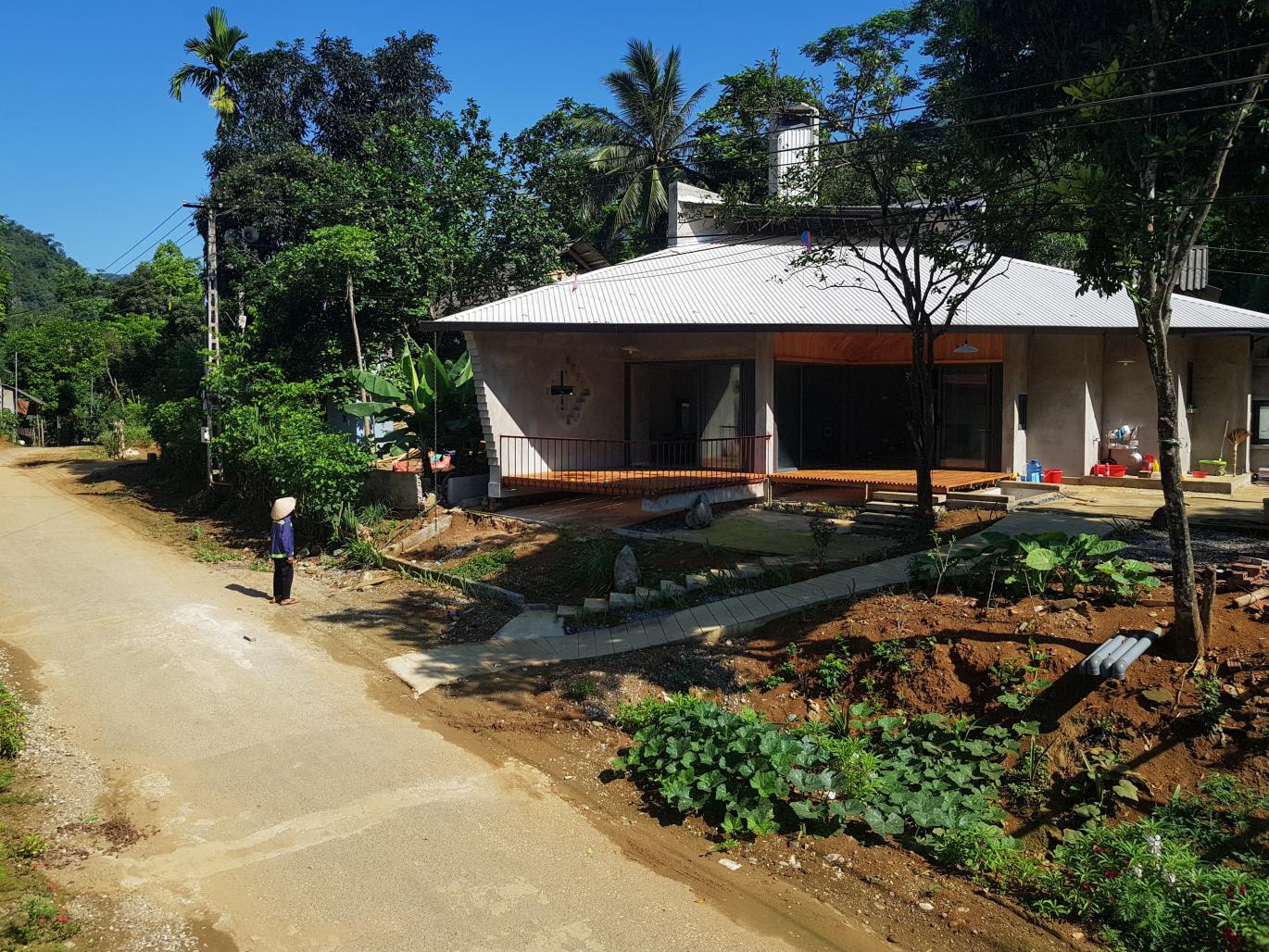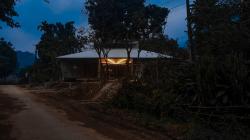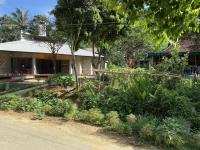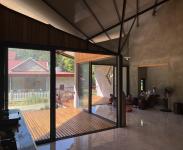The house locates in a remote region of Thanh Hoa prefecture, Vietnam. The landscape is characterized by mountain valleys, streams,hamlets and rice fields. The region is the land of Tai people, a small ethnic group that has been living for centuries with a unique life style, everyone lives together in only one space and under a huge roof.
This space accommodates different functions such as kitchen, living area, sleeping area, every one share their space together for their daily activities: meeting guests, eating, sleeping, cooking and cultural events. It results in a lifestyle that enriches communal and collective activities that bring people together.
Therefore, the most critical approach to designing this house is how to interpret people’ living habits that exist in their long lasting history. That is why the design strategy is to think from the inside-out. For instance, instead of dividing into many functions, we proposed a multi-functional space that houses living room, kitchen, and dining room, just like the traditional house on stilt. The triangular morphology in the layout and the roof is the result of the surrounding context: there are many trees at the construction site so we try to keep as many trees as possible, as it is important for the original landscape to remain least touched.
In term of the environment, we suppose that every house no matter what context they are in should optimize human comfort by controlling heat, wind ventilation, light and energy efficiency. Thus, we apply cross ventilation in many areas of the house. For instance, bay windows with two openings in the opposite direction are introduced in bedrooms and in common space. It is an effective way to have in and out flow of the air. This small detail can also create indirect light for the interior. This sort of light is tender and soft that always comforts human’s eyes.
Last but not the least, the roof plays an important role for this house, it has a unique shape. It has an opening like a clerestory window for fresh air to flow in like many car air intake system to cool down the combustion engine and the light can also penetrate. There is a so called “Thermal chimney” on top of the roof that reaches almost 3 meter high. Thermal chimneys take advantage of a physical law: Stack ventilation. As we know, the air always moves from high pressure area (cold, dense air) to low pressure area (hot, thin air). Base on this effect, the thermal chimney sucks the hot air out of the house at the top, meanwhile the clerestory window provides fresh air for the interior. As a result, the house is always ventilated horizontally and vertically.
In general, we believe that with this passive design strategy and a respective attitude for tradition, the people live inside the house will always feel comfortable and enjoy a happy life without forgetting their life style: Living together in a big space, under a big roof.
2020
2021
Built area: 80m2
Construction system:concrete, brick, steel.
Finishing Materials: corrugated metal panels, steel, aluminum, hardwood.
Lead architect: Ha Duc Cuong
Local contractor: Ha Van Bang
Structural consultant: Nguyen Viet Loc











